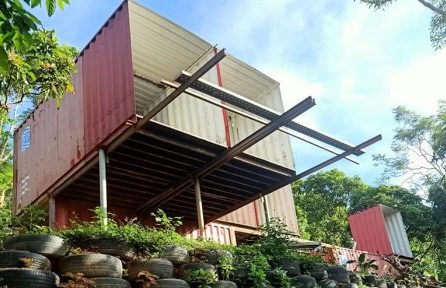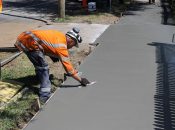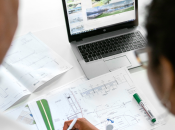
In the ever-evolving world of architecture, engineering and sustainable living, container homes have emerged as a unique and innovative housing solution. Repurposing shipping containers into livable spaces has gained popularity for its eco-friendliness, cost-effectiveness, and avant-garde aesthetic. However, like any architectural concept, container homes come with their own set of advantages and challenges. In this comprehensive review, we delve into the world of container homes, exploring the pros and cons that potential homeowners should consider before embracing this modern living trend.
The Pros:
1. Sustainability and Recycling. One of the most compelling aspects of container homes is their positive impact on the environment. By repurposing decommissioned shipping containers, these homes contribute to reducing waste and the demand for new construction materials. Each reused container represents a step toward a more sustainable future, making container homes an appealing choice for environmentally conscious individuals.
2. Affordability: Container homes have gained popularity partly due to their affordability compared to traditional construction. The initial cost of purchasing and modifying containers can be significantly lower than building a conventional house. This makes container homes an attractive option for those looking to own a home without incurring massive debt.
3. Durability and Strength: Shipping containers are designed to withstand harsh conditions at sea, making them incredibly sturdy and durable structures. When properly insulated and renovated, container homes can withstand extreme weather, making them suitable for various climates and locations.
4. Quick Construction: The modular nature of container homes allows for faster construction compared to traditional housing. With careful planning and efficient design, container homes can be assembled in a relatively short amount of time, reducing labor costs and the time homeowners spend waiting for their new abode.
5. Design Flexibility: Contrary to popular belief, container homes offer a surprising degree of design flexibility. The modular nature of containers allows for various configurations and layouts. Whether you’re interested in a minimalist, industrial look or a sleek and modern design, container homes can be customized to suit your aesthetic preferences.
6. Portability: Container homes can be transported relatively easily, making them an intriguing option for those who desire a mobile living arrangement. This feature is particularly appealing for individuals who value the ability to relocate without leaving their home behind.

Under Construction of Shipping Container Home
The Cons:
1. Insulation and Climate Control: One of the significant challenges of container homes is proper insulation. Shipping containers are made of steel, which conducts heat and cold. Without adequate insulation, container homes can become unbearably hot in the summer and excessively cold in the winter. Addressing this issue requires careful planning and additional expenses for insulation materials and installation.
2. Limited Space: While containers come in various sizes, the dimensions are still relatively small compared to a traditional home. This limited space can pose challenges in terms of designing functional and comfortable living areas, particularly for larger families or those who desire ample room for activities.
3. Structural Modifications: While the strength of shipping containers is an advantage, it can also be a drawback when making structural modifications. Cutting openings for doors, windows, and other design elements can weaken the container’s structural integrity if not done correctly. Proper engineering and reinforcement are essential but can add to the overall construction costs.
4. Permits and Regulations: Container homes may face zoning restrictions and building codes that vary by location. Some areas have stringent regulations regarding unconventional housing, which can lead to difficulties in obtaining permits for construction. Prospective container homeowners should thoroughly research local regulations before committing to this housing option.
5. Maintenance and Rust Concerns: Although shipping containers are built to withstand the rigors of maritime travel, they are still susceptible to rust and corrosion, especially in humid or coastal areas. Regular maintenance and rust-proofing are necessary to ensure the longevity of a container home.
6. Acoustic and Aesthetic Limitations: The industrial aesthetic of container homes might not appeal to everyone. Additionally, the steel structure can create acoustic challenges, resulting in a noisier interior compared to traditional homes. Soundproofing measures and interior design choices may be required to mitigate these issues.
Conclusion:
Container homes represent a fascinating fusion of sustainability, affordability, and modern design. They offer a unique opportunity to repurpose materials and create distinctive living spaces. However, like any architectural trend, container homes come with their own set of challenges that potential homeowners must carefully consider.
When embarking on the journey of container home ownership, thorough research and planning are paramount. The pros of sustainability, affordability, and design flexibility can be compelling factors, especially for those seeking an alternative to traditional housing. However, addressing issues such as insulation, structural modifications, and local regulations is crucial to ensuring a successful and satisfying container home experience.
Ultimately, container homes exemplify the innovation and adaptability that define modern architecture. They provide an avenue for creative expression while pushing the boundaries of sustainable living. As the world continues to explore new ways of housing its growing population, container homes stand as a testament to the power of imagination and the potential for change within the realm of housing and design.
How to Construct Shipping Container Homes?
Are you an architect, engineer or a contractor interested in constructing Container Homes? Check out the most comprehensive guide in building Shipping Container Homes. This e-book will guide you on how to properly execute a Shipping Container Home of your own or to your stakeholders, check the image below!
What do you think about this article? Let us know your thoughts and comment down below. You can also follow, like, and subscribe to our social media pages below to be updated with the latest posts.
![]()











